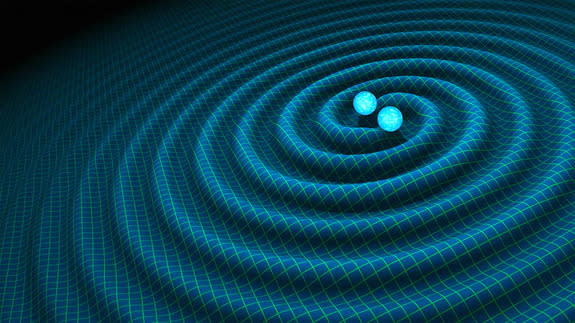We've finally found gravitational waves, so can we time travel?

Physicists working with a powerful observatory on Earth announced Thursday that they have finally detected ripples in space and time created by two colliding black holes, confirming a prediction made by Albert Einstein 100 years ago.
These ripples in the fabric of space-time, called gravitational waves, were created by the merger of two massive black holes 1.3 billion years ago. The Laser Interferometer Gravitational-Wave Observatory (LIGO) on Earth detected them on Sept. 14, 2015, and scientists evaluated their findings and put them through the peer review process before publicly disclosing the landmark discovery today.
SEE ALSO: Einstein was right: Scientists detect gravitational waves for the first time
While this finding potentially opens a up a new way to learn more about how the universe works, there's one question in particular non-scientists seem to want answered: Can we finally travel through time now?
First of all, it's not a bad question.
Think about space-time as a fabric that stretches through the universe and is affected by matter like stars, black holes, planets and other cosmic objects. Massive bodies warp space-time around them, creating what we feel as gravity on Earth.
It would follow that learning more about it could lead to some kind of understanding of how to manipulate space-time to somehow travel through time.
However, according to one well-known expert, this new gravitational wave discovery won't necessarily get us there.
"I don’t think it [the detection of gravitational waves] is going to bring us any closer to being able to do time travel. I wish it would," said LIGO co-founder Kip Thorne during a press conference announcing the discovery.
Thorne should know, given that he was also an executive producer on the 2014 film Interstellar.
Even though we probably won't be able to surf a gravitational wave into the future or the past, this finding still means a lot for physics.
The merger of the two black holes "created a violent storm in space-time," Thorne said, allowing scientists to see the disruption in space-time as it passed through Earth's part of space.
By confirming that gravitational waves are produced by the extreme collisions of massive objects in the universe, it gives scientists a new way to explore space. Instead of just looking at the cosmos in infrared, optical and ultraviolet light, researchers can now use gravity as another way to investigate.
But the book isn't necessarily closed on the time travel question.
Some scientists haven't yet counted out the idea that this discovery could lead to something unexpected way down the line.
“The discovery will allow us to explore space and time in a spectacular new way," physicist Brian Greene told Mashable. "Might that one day yield breakthroughs in space travel or perhaps even in time travel? Who knows. But deep understanding is the first step forward."


